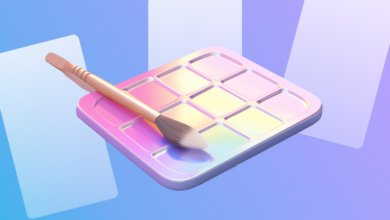Product Development Guide: How to Take Your Idea to Market (2025)

Even the most successful ecommerce businesses rarely get from idea to finished product in a straight line. If you’re just starting out, you might be wondering: How do you turn the product idea in your head into something customers can buy?
This guide breaks down the product development process and shows you exactly how to bring your idea to life.
What is product development?
Product development is the process of taking a product from idea to market. The process includes:
- Creating a product roadmap
- Collecting customer feedback
The process brings together many parts of your business, from design and engineering to marketing. Larger companies often have product managers who guide products through development.
📦 Read more: How To Create a Successful Product Development Strategy
The 7-step new product development process
- Generate an idea
- Sketch your product
- Validate your product
- Create a prototype
- Source materials and production partners
- Calculate your unit economics
- Launch your product
While product development varies by industry, these seven stages form the foundation of bringing any new product to market. Here’s how to use this framework for your product:
1. Generate an idea
Don’t wait for the perfect never-before-seen product idea to strike. Many successful products build on existing ones. Try the SCAMPER framework to spark ideas:
- Substitute: Replace materials (like faux fur for fur)
- Combine: Merge products (like a phone case with a battery pack)
- Adapt: Modify for new needs (like nursing bras with front clasps)
- Modify: Improve design (like sleek electric toothbrushes)
- Put to another use: Find new applications (like memory-foam dog beds)
- Eliminate: Remove elements (like cutting out middlemen to reduce costs)
- Reverse/rearrange: Change perspective (like switching from plastic to glass food storage)
Take Lindsay McCormick’s story. She founded Bite toothpaste tablets by modifying an existing product. “When I started looking into toothpaste and the way it comes in a plastic tube—and there’s a bunch of harsh chemicals, artificial flavors, ingredients that come in it—I thought: I could make something that’s better for the planet and better for our body,” Lindsay says on Shopify Masters.
📦 Read more: Find New Product Ideas in These 16 Places
2. Sketch your product
With your idea in hand, it’s time to map out what your product will look like. Create a draft that lists all components, whether your product is physical or digital. Don’t worry if sketching isn’t your strength—you can hire a technical illustrator through platforms like Dribbble or UpWork.
3. Validate your product
Before investing too much time and money, make sure your target market wants to buy your product. Product validation helps you analyze both functionality and market fit. Try these validation strategies:
- Send online surveys to potential customers
Ask yourself how your product fits in the market:
- Does it expand an existing category?
- Does it disrupt a category?
- Does it create a new category?
Finally, conduct a competitive analysis. Look closely at your competitors to understand how they attract and sell to customers. Ask potential customers what they like and dislike about similar products to find your competitive advantage.
4. Create a prototype
Prototyping means crafting a finished sample before you start mass production. You’ll likely make several versions, improving each one until you have a final sample you’re happy with. Consider whether you need patents to protect your design.
Test your first usable version (your minimum viable product) with a small group to:
- Collect feedback for improvements
For example, when Jen Liao started MìLà, she tested her soup dumpling prototypes by hand-delivering them to customers in Ziploc bags. “Step by step, we kept evolving what we had in terms of the packaging, the product, the infrastructure,” Jen says in an episode of Shopify Masters. “And we just let the demand lead us to what we needed to unlock next.”
🌸 Podcast: Why Perfecting Product Design Was Key to This Brand’s Success
Charlie Bowes-Lyon and Freddy Ward launched Wild to eliminate single-use plastic deodorant packaging. Their product development process spanned 35 iterations before launch. 👉 Learn more
5. Source materials and production partners
After finalizing your prototype, build your product’s supply chain by finding manufacturers and suppliers. Here’s how to find the right partners:
- Get samples from multiple suppliers and compare quality and costs.
- Test samples from potential manufacturers.
- Weigh local vs. international sourcing options.
- Plan your storage, shipping, and warehousing needs.
6. Calculate your unit economics
With your production partners in place, figure out how much you can make per unit sold. This means understanding your costs and setting the right price.
Star by calculating your cost of goods sold (COGS), which includes:
- Other direct production costs
Note that COGS are just your production costs—you’ll have other operating expenses like overhead and marketing to consider too.
Once you know your costs, develop your pricing strategy.
Get your free product development worksheet
Create a product that meets your customers’ needs with our easy-to-follow, 7-step product development worksheet.
Learn more
7. Launch your product
You’ve created a product with market appeal that can turn a profit.
When it’s time to present your product to your customers, it’s crucial to plan a successful product launch. Here are the steps to follow:
Choose your timing:
Pick the launch date based on seasonality, consumer trends, and market conditions.
Select your channels:
Plan how to promote your product through SMS, email, social media, and affiliate marketing partnerships.
Build your strategy:
Create core messages that tell your product’s story and convince customers why they should make a purchase.
Get customer feedback:
After the launch, gather reviews and conduct surveys to understand customer opinions. Use their feedback to enhance your product.
📦 Read more: 25 Alternatives to Running Paid Ads to Promote Your Business
Product development examples
Every business owner’s journey in product development is unique. Here are some real-world examples to inspire you:
Bola Grills
Bola Grills founder David Levy aimed to create a tabletop grill that allowed him to stay engaged with his guests. He focused on features like proper charcoal airflow and heat-safe technology. With the help of college students, he built a prototype. A successful crowdfunding campaign raised $22,000 and sold 94 grills.
However, David faced challenges with his manufacturer, leading him to make the tough decision to find a new one. His persistence paid off, and he launched the final product just in time for barbecue season.
City Seltzer
City Seltzer started as a serendipitous product when Dominion City Brewing sold creamsicle-flavored seltzers at a beer festival. The positive feedback led to the creation of a full product line sold in local establishments and online.
Brightland
Brightland founder Aishwarya Iyer identified a gap in the olive oil market and decided to create a brand that emphasized transparency and quality. Through research and collaboration with farmers, she developed a product line that supported local farms and offered customers a superior olive oil experience.
Product development FAQ
What is the product development process?
The product development process involves all steps from idea generation to launching the product, including prototyping and costing.
How can I come up with new product ideas?
Using methods like SCAMPER, you can modify existing products to create new ideas. SCAMPER stands for Substitute, Combine, Adapt, Modify, Put to another use, Eliminate, and Reverse/rearrange.
What’s the difference between product development and product management?
Product development focuses on creating and launching the product, while product management guides teams through the creation process.
What are the 7 stages of product development?
The stages include generating ideas, market research, planning, prototyping, sourcing materials, cost calculation, and product launch.
What is a minimum viable product?
A minimum viable product (MVP) is an early version of the product with basic features for customers to test, providing valuable feedback before the full launch.
The sentence is the smallest unit of language that expresses a complete thought.



